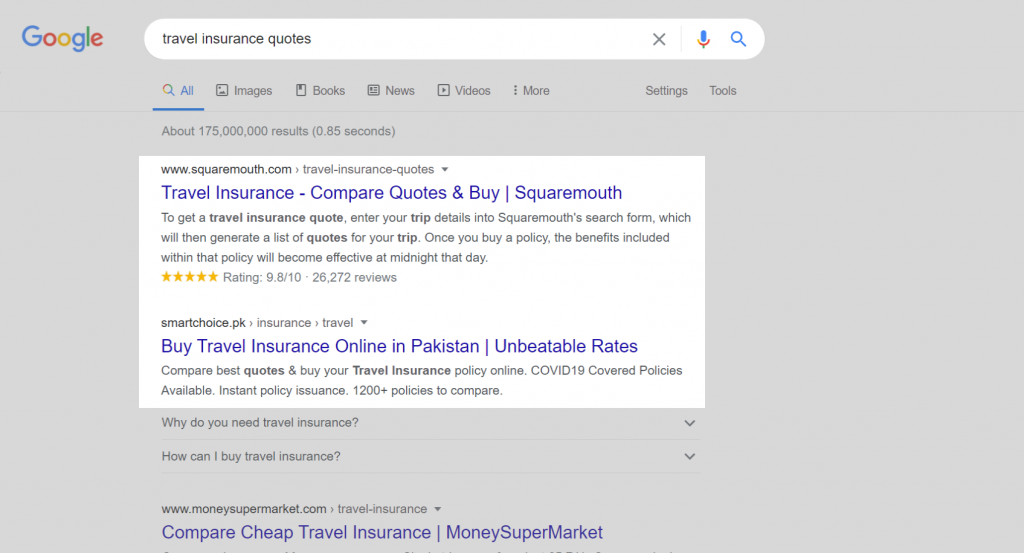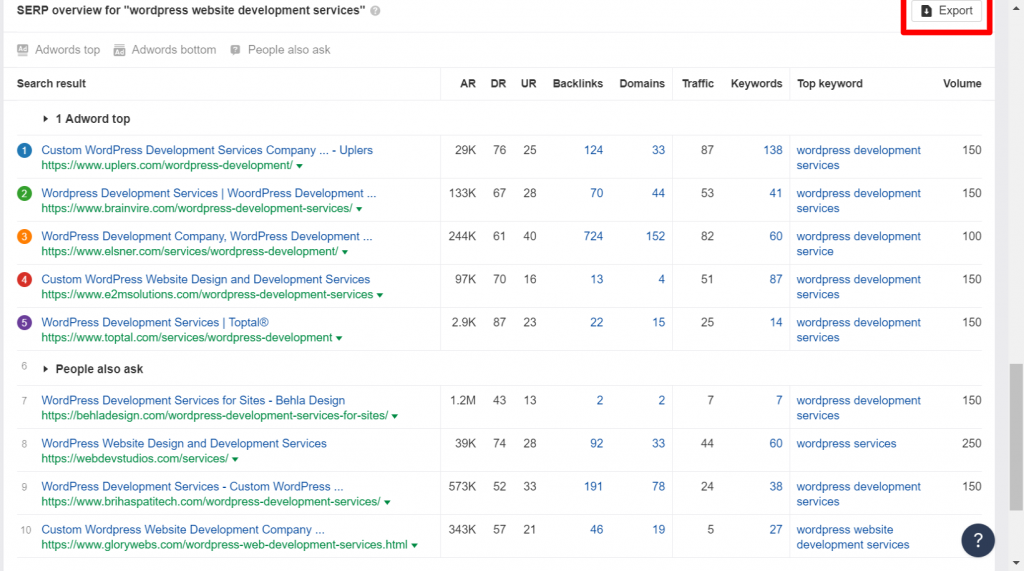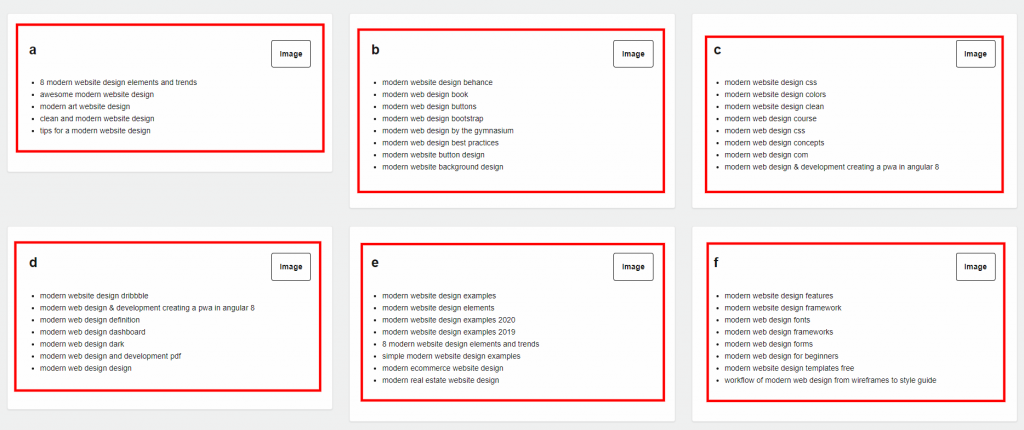In this guide, we are going to share the complete on-page SEO checklist we follow at TechNerds.
This is a comprehensive A-Z on-page SEO checklist and we can guarantee, that you won’t need to look anywhere else for on-page SEO content. Our clients have benefited massively from us implementing this checklist on their website.
Let’s get going:
What is On-Page SEO?
Imagine you’ve created a service page for your website and now you want organic traffic on it. How will you do it? Through on-page SEO. On-page SEO means the optimization of a service page to make it rank higher on Google SERPs in a bid to attract relevant traffic.
On-page SEO mainly refers to the HTML source code and the content which can be optimized for results. This is different from off-page SEO which is related to link-building and other external optimization factors.
What is On-Site SEO?
Once you’ve created a website, getting website traffic on it is a must. This is where on-site SEO comes in. It is the act of optimizing elements on a website for it to rank higher on search engine results pages and attract more relevant search engine traffic.
Difference between On-Page SEO and Off-Page?
On-page SEO refers to optimizing the HTML elements of your website. These factors are within your control and can be constantly worked upon for better Search Engine results.
On the other hand, Off-page SEO focuses on the ranking factors that occur outside of your website such as the number of websites that refer to your domain via brand mentions and backlinks.
Why is On-Page SEO Important?
A critical part of On-Page SEO is keyword research for the website you’re handling. Google follows all the keywords on your website to gather context and see what your website is all about.
Brian Dean from Backlinko analyzed the direct relationship between keyword-focused title tags and Google search rankings.
In fact, you can see the exact words in the titles for highly competitive keywords.

The on-Page SEO optimization checklist consists of:
- Keywords
- Copywriting
- Multimedia
- Links
- User Experience
- Conversions
Understanding and executing all these on-page optimization checklist factors will determine how your page will rank in Google.
This on–page SEO checklist will help you with:
- Time spent on a website
- Expertise and authority of your brand
- Drive conversions
💡 Dwell time is the time spent on a page by a user when he/she clicks on a Google result
Follow this checklist and you will have an optimized page for Google Rankings.
The Checklist is split into different subheadings such as:
- Basics
- Google Facing Issues
- Primary Words
- Writing
- Links
- Images
- Videos
- User Experience (UX)
- Structured Data
- E-A-T Criteria
- Conversion Optimization
- Design & User Interface (UI)
Let’s begin with the on-page SEO Checklist steps:
Let’s start with the Basics
- Is Google Analytics set up on your website
- You need to set up Analytics Software to see how your On-Page optimization and SEO campaign is performing.
- Are you tracking your primary keyword phrase?
You need to set up a tracking mechanism to analyze primary keywords and their performance on monthly basis.
Disclaimer: This point only applies to those keywords which exist before or you plan to track.
Google Facing Issues
- Is your page crawlable?
- Your page needs to be accessible for Google Spiders to crawl. Check your robots.txt file or no-index tag to see if they are crawlable?
- You can use screaming frog to see Crawlability issues. Go to Response Codes > Apply the blocked by robots.txt filter.
- Is your page indexable?
- Copy your URL and paste it into the Google search bar to see if your page is showing.
- If not indexed, go to Screamingfrog Directives bar > Apply the no-index filter.
- If your URL is still not showing, you need to check the site architecture and see if the URL is only three clicks from the homepage. A common issue with enterprise and ecommerce websites.
- Click on the Site Architecture tab and see the Crawl Depth Graph to analyze the issue.
- If the website passes all the tests, go to Google Search Console URL Inspection > Request Indexing
- Another way to index the page is to gather backlinks for it.
Primary Words
- Are you targeting the right keywords?
- Keyword research is the most extensive On-page SEO process and most people underestimate it. You need to double-check or even triple-check whether the keywords you are targeting are worth it.
- Competitor analysis is a big part of keyword research
- Go to Ahrefs keyword explorer and write your focused keyword. Drop high Keyword Difficulty(KD) & low volume keywords if you have a new website.
- Use Webpage word counter and Ahrefs SERP overview to become better at keyword analysis.

Have you already targeted this keyword?
You need to see if you are already targeting this keyword on many pages and If you aren’t you need to avoid it. It is known as keyword cannibalization
Target One Primary Keyword per page and focus on creating and updating that one page
You can use related keywords if the intent is different. For example, one page is informational and the other is transactional.
Does your page satisfy search intent
4 Primary Categories You Need To Consider
- Informational – “How to Get Backlinks”
- Transactional – “Buy Backlinks”
- Comparison – “Moz vs Ahrefs”
- Navigational – “TechNerds”
You need to target users at each stage of the marketing funnel.

Is your primary keyword in the title?
Your focus keyword should be in the title tag, with no exceptions
Is your title click-worthy?
Title Tags are not there for on-page SEO, they also help you with click-through rate (CTR)
Can you add modifiers to your title?
Title modifiers like “best”, “top”, or the year (“2020”) can help you capture more long-tail organic search traffic.
Have you used all your title tag space?
You can write 65 characters in the title tag. Make sure you use every character.
Make sure your focus keyword appears at the beginning of the title tag
You can use Screaming Frog to find all titles under or over 65 characters with Page Titles > Over 65 characters filter.
Is your page title wrapped in an H1 tag?
Every page should have one H1 tag
You can use Screaming Frog to find what pages don’t currently have H1s
H1 Tab > Dropdown filter saying Missing
Is your primary keyword in the meta description?
You need to front-load your meta description. Google does, at times, use a different meta description that is present on your page
Is your meta description click-worthy?
You can get a detailed article on meta description optimization.
Is your primary keyword in the URL?
Your focus keyword should be in the URL as said by Google in this article.
Is your URL structure lean?
Brian Dean says shorter URLs tend to perform better.
UX is a bigger factor behind short URLs
Is your primary keyword in the first sentence?
Make sure you have the best foot forward by adding your target keyword in the first line.
If it doesn’t make sense or doesn’t look good, you can add it in the first paragraph.
Is your keyword density too aggressive relative to your competitors?
You need to see the keyword frequency of your competitors and align your content.
Focus on natural writing
Use this tool to see the keyword frequency of your competitors.
Have you added variations of your primary keyword into the copy?
Go to Ahrefs Keyword explorer and add most of the keywords that show up in the “Also rank for” section”
It helps Google understand the context.

Have you added synonyms (LSI keywords) of your primary keyword into the copy?
You need to add Latent Semantic Intent (LSI) keywords to help Google understand the theme of your webpage.
You can use Answer the Public or Google search to get LSI Keywords
Do make sure that you don’t mix keyword intent such as informational and transactional keywords

Writing
Is your page different & better than your competitors?
Unique + create more value > Long Pages
How to create unique content?
Use testimonials + case studies to make your page personal
You need to have a better visual interface than your competitors
Transactional pages should have well defined CTAs and above-the-fold forms
Help your user by providing well-written content in blog posts and FAQs
Build Trust and Authority.
Become Useful for the User.
Is your copy free of spelling and grammatical errors?
Use Grammarly to check for spelling mistakes
Is your copy longer (on average) than your competitors?
Ahrefs noted that there is a small relationship between long content and google rankings.

Your content needs to be different from the rest. The long part should not be the priority here.
You can use this tool to see the number of words in a competitor’s article.
Is your copy written well?
well written content > long content
If you can’t write well, hire a writer
Is your copy scannable?
It is a fact that users scan the content before reading.
Make sure headings are catchy to entice the reader to read.
Is your copy written for an 8th grader?
Users don’t care how much you know. All they care about is how you can help them.
Use simple words and short sentences to make your point.
It makes you more relatable.
You can use Hemingway Editor to make your on-page SEO writing easier to understand.
Is your copy engaging?
Your copy should entice readers to read and digest your content.
That is how you will increase your dwell time.
You need to write with your target audience in mind and relate to them via stories.
Does your copy use short paragraphs?
You need to keep your copy short and sweet.
Information is absorbed quickly in small chunks
Don’t go above three sentences per paragraph.
Are your headings structured logically?
H1>H2>H3>H4
Is your copy using descriptive headings?
Your headlines should describe the content it is holding.
A reader will scan all of the headings before diving in to read.
Have you used keyword variations, LSIs, or synonyms in your headings?
Is your copy using bullet points and numbered lists?
You need to break your content into different chunks by adding bullet points and numbered lists.
Is your copy “fresh”?
You need to update old content once every six months to keep it fresh.
Links
Does your page have internal links?
You need to interlink all your pages to build your site authority and Crawlability.
It will also help other pages to rank with them.
Are your internal links using descriptive anchor text?
You need to rich your focus keywords to link internal links.
Are your internal links optimized based on first link priority?
Try to add internal links in editorial stuff such as blogs.
Google follows the first link priority. It follows only the first link on a page
Does the page have breadcrumbs?
Breadcrumbs are useful when dealing with large and Ecommerce websites.
Are your internal links useful?
Make your internal links as natural as possible for on-page SEO optimization.
Don’t force them as it looks unnatural
Are all your internal links using preferred URLs?
301 redirects force your URLs to change.
Make sure to link preferred URLs
Does your page have external links?
You should be linking to trustworthy sources.
Are all affiliate, sponsored, or paid links using a “NoFollow” tag?
You need to no-follow all your paid links according to Google Webmaster Guidelines.
Do all your external links set to open in a new window?
You need to keep users on your website as long as possible.
Does your page have broken links?
You need to see any broken links on your page as they hinder user experience.
Go to SEO Spider. Response Codes > Client Error (4xx) Filter
Are all your links clearly links?
All your links should act as underlines that change color on hover.
Images
Does your page have as many or more images as your competitors?
You need to add more and different images to your website.
Are your images unique to your website?
You need to add different images on your blog posts that are not used anywhere before.
Extra effort is always worth it as it elevates your brand.
Are your images high-quality for on-page SEO?
In order to tick all the points on your on-page optimization checklist, it is important for your images to be of high quality while being lighter in terms of size.
Are you using the right image format?
PNG, JPEG, or GIF.
You need to optimize images otherwise it increases your web page loading time.
Are your images sized appropriately?
Make sure your image is resized according to your blog.
Are your images compressed?
You need to compress your images online.
Pictures are the main culprit behind lagging website speed.
Use TinyPNG to optimize all your images.
Do your images have descriptive file names?
Naming your Image files appropriately by incorporating descriptive words.
It helps with SEO as said by Google.
Do all of your images have descriptive and accurate tag descriptions?
Like file names, add descriptive keywords in your images.
Video
Does your page have video content?
Videos increase dwell time
Invest in Video to outrank your competition
Are the videos relevant to the page/primary keyword?
Are the videos unique to your brand?
You can embed any video on YouTube
It’s better to embed your own visual content to establish a presence on YouTube
Are the videos high-quality and valuable?
Work on your script for videos and make sure you have an engaging personality for YouTube.
Is the video content responsive?
You need to make sure your video is responsive.
If not, work on your website’s design
Are the videos hosted on the right platform?
Use YouTube to embed videos in your blog.
It is necessary from an SEO perspective to embed videos from YouTube.
Are the videos optimized?
You need to add your focus keyword to the title of the video.
User Experience (UX)
Does your page load in less than 3 seconds?
Page Speed is one of the biggest user experience factors.
Use Google Speed Insight and GTMetrix to see your web page speeds.
Is your page responsive and mobile-friendly?
Your web page needs to be responsive as Google does mobile indexing.
Does your website have an SSL certificate installed?
Make sure your website has an SSL certificate
Google doesn’t rank your pages if you don’t have them.
It labels your website as “not secure”
if you want to know how to install an SSL certificate, we have created a blog post just for that.
Is your font type legible and easy to read on all devices?
You can follow this blog’s recommendations for Font Selection.
Is your font size large enough to easily read on all devices?
Your font size should be large enough to see on all devices.
Does your page use aggressive interstitials?
Google doesn’t like websites that use excessive popups.
If you are planning on using them, use them once a user
goes to a second or third page
Avoid popups on mobile pages altogether.
Does your page have aggressive ad placements?
Google Panda worked against webmasters who used aggressive
ads on their websites coupled with thin content.
Every SEO-driven page should be built to serve the user first.
Use ads that are not hindering the user experience.
Is your address prominently displayed?
Your Address should be displayed in the footer of the website.
Structured Data
Is your address using structured data?
Structured Data is not part of Google’s Algorithm.
It adds to the user experience if we implement it on our
website.
Wrap your address with structured data so that Google
understand your business better.
Is your page using structured data?
Your page should incorporate structured data automatically
if you are working with WordPress.
Use Yoast or RankMath to add schema automatically.
Is the structured data set up correctly?
To check whether your schema is implemented. Use
Google Structured Data Testing Tool.
E-A-T Criteria
Are you giving health, financial, or legal advice?
Any website offering health, financial, or legal advice will be
under increased audit from now on.
People actually get hurt by your suggestions or inaccurate information.
Make sure your page is accurate and doesn’t promote false information.
Does your page have the appropriate disclaimers?
Any website offering health, financial or legal advice should have a proper
disclaimer to gather trust.
Does your page list and link to all sources of information?
Make sure all your shared information is backed by sources.
Don’t plagiarize content and credit the author of the original
content.
it’s ethical and common courtesy
Does your blog content have a visible author?
Your SEO Performance goes down if you don’t mention the author.
Is the author credible and qualified to write about the topic?
Your experience with what you are talking about matters.
Google will rank your content if you are knowledgeable about
the topic you are writing.
Does every blog post have a detailed author box/bio?
There should a box in which a detailed description of the writer
is present.
You can also add the social media links of the author to further promote trust.
Does each author have a dedicated and detailed author page?
This is not a ranking factor but adds another layer of trust to your website.
Conversion Optimization
Does the page have a clear call-to-action (CTA)?
Google follows goal completions. A goal could be
transactional or informational in nature.
The goal is followed by the intent of the focus keyword
you are trying to rank for.
Every page on your website should have a Call-to-Action (CTA).
If it is a transactional page, your goal would be signups and phone calls.
If it is informational in nature, your goal would be social media shares
and blog comments.
Is the page shareable?
Social media share buttons need to be prominently addressed across
all your blog posts.
You can use Sumo to add social media buttons
Design & User Interface (UI)
Is the website design modern and updated?
Your website needs to be professional and updated according to your modern website design.
That is all folks… I know it is a big list. Besides, I am confident if you follow all these steps as an on-page SEO checklist, you won’t have to look at another article or blog post. If you believe I have missed out on something, don’t forget to share that with me.
If you don’t have the time to go through the checklist I shared. Hire us for our SEO services and we will put in place all these points.

